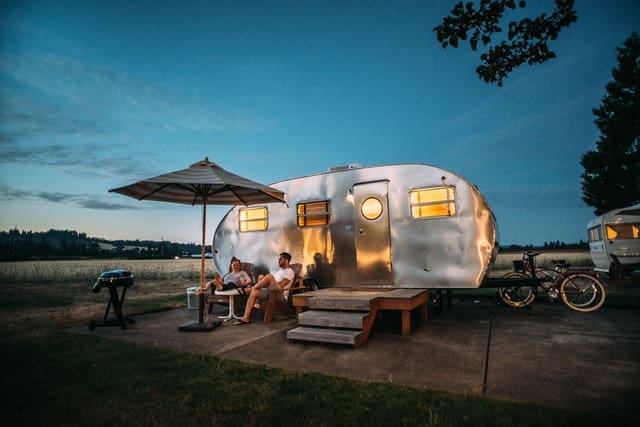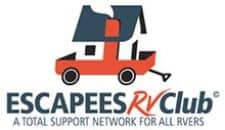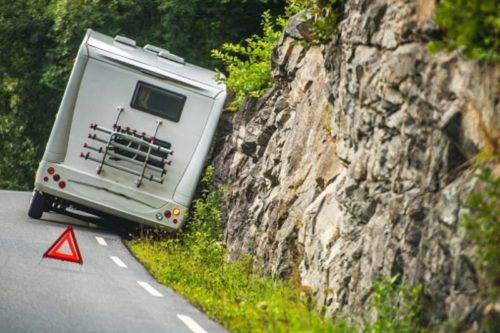The mountains are calling, and I must go.
John Muir Tweet
You’ve been summoned.
Drawn to the majesty of the alpine Rocky Mountains, the grandeur of Acadia, the balds of the Smokies or the alpine lakes of Glacier. National Parks are America’s greatest idea, and you can’t resist the temptation of Mother Nature’s siren song.
Visiting a National Park in an RV allows you an up-close-and-personal experience with the park’s weather, scenery and wildlife. 250-350 million people visit America’s National Parks every year. Most travel by automobile, but you know the secret: the best way to experience the parks is by RV!
But … how big can you go?
Because in case you don’t know, most National Parks have restrictions on maximum RV length.
Now, this can (and should) actually be broken down into several questions:
- How big of an RV do you need for the trip you want to take?
- How heavy and large of an RV trailer are you comfortable driving?
- How long of an RV is recommended for National Parks?
Let’s talk about Question Number Three.
The optimal length for a towable or motorhome RV in a National Park campground is 25-30 feet.
That’s the short rule of thumb: If you want to visit lots of National Parks for your bucket list, a safe bet is 30 feet or less. Scroll down to learn more about whether this applies to just your RV or if it also includes your tow vehicle.
Important Things to Know!
- Many parks, particularly the more popular ones, commonly allow RVs up to 40 feet in total length.
- Some parks even allow RVs up to 50 feet – or no maximum length whatsoever!
- Campgrounds may have separate length limitations for motorhomes and trailers (e.g. motorhomes 40 feet, trailers 35 feet). When this is the case, allowable length for trailers is usually 5-10 feet less than motorhomes.
- RV length limitations often (but not always) jump in increments of 5-ft (e.g. 25, 30, 40 ft allowed).
- On the smaller end, some NPS campgrounds limit RV length to 22-25 feet (or even smaller!). These campgrounds tend to be more remote, smaller, without any hookups, and may require high-clearance vehicles for access.
As a rule, the more rugged the terrain, the more limited the RV length.
And don’t forget about those slide-outs! Check width restrictions as well. Restrictions may vary by campsite due to tree location and turn radius. When in doubt, call ahead.

If your RV is up to 35 feet long, you can usually find a spot at most National Parks.
According to Camper Report, RVs up to 35 feet in length will fit in 73% of National Park campgrounds. And since many Parks have multiple campgrounds, there’s a pretty good chance you’ll find a home for the night.
Your odds are still decent up to 40 ft. It is reported that roughly half of all NPS campgrounds accept RVs up to 40 feet in total length. You’ll be restricted to more developed campgrounds in more popular parks, however, so the odds of reserving a spot become slim. Everyone wants the same spot you do!
Camping opportunities take a nosedive after 40 feet. Only the odd NPS campground here and there will accept behemoth RVs. Even where no maximum length is posted, you’ll find anything 40 feet and over will be a tight squeeze. You may find yourself dammed up on a hairpin turn or in a zero-clearance parking spot.
Call ahead! Some sites have “fudge room.”
No one really likes this answer. Unfortunately, it really is the best advice.
Some sites only allow 30-ft combined length, but guess what?! – there’s room to unhitch and park beside your RV (but you’re only allowed up to two vehicles per site, remember).
Meanwhile, other sites only allow 30-ft combined length – period. No room to park beside your camper. Sorry.
But maybe others have a campground parking lot that’s a 100-yard walk away!
Or maybe there’s a public parking lot that’s a 5-15 minute drive away.
Also, let’s just say that some of the numbers posted online by the National Park Service aren’t known for their accuracy. Or maybe they haven’t been updated in 8 years. Who knows?
So do yourself a favor and call ahead! Talk to a park ranger or campground host and get the goods. You may be pleasantly surprised (or you may avoid a tremendous headache).
Combined vs. Total Length?
Don’t get confused by combined vs. total length!
Body Length
First of all, you should know that actual lengths rarely correspond to “sales” lengths! This is particularly true for travel trailers. The sales length, or the length indicated on a floorplan name, is often the nominal size of the RV body only.
More often than not, a “24-ft travel trailer” only has a body length of 24 feet. The body length is the front-to-back measurement of the box that sits on the trailer frame.
Total Length
The total length of the RV is the actual tip-to-tail measurement, body and frame included.
In the case of a travel trailer, the total length of the RV, once the frame is added, is usually about 3-5 feet longer.
Combined Length
The combined length includes the total length of the RV and the total length of the tow vehicle.
For instance, say a trailer has a total length of 26 ft. When towed with a 16-ft pickup truck, the two have a combined length of 26+16 = 42 feet.
Or if you drive a motorhome with a toad, the combined length includes both.
Do not assume whether a length restriction applies to total RV or combined length!
For instance, most campgrounds restrict total length. If you can unhitch your towable RV and move your tow vehicle out of the way, more power to you.
*This isn’t true for every campground. Some campsites have no separate parking area. In this case, the combined length is the most restrictive.
For details on how manufacturers will measure your RV, visit this page from RVIA.
How to Measure Different RVs?
Many different vehicles fit under the RV umbrella. The biggest division within these vehicles is:
- A) Whether or not you will need an extra vehicle to tow it.
- B) What type of hitch is required to tow or haul.
If we split up RV types by how they are measured, we have four types: Motorhomes, towables, 5th wheels, and truck campers. These are all measured differently.
How Do I Measure the Length of My RV?
Measuring an Older RV?
it is a good idea to bring a measuring tape when you go to the retailer or do some research on your own as some manufacturer numbers are more a way to sort the different sizes than exact measurements.
For instance, the Puma 23-RBFQ model is listed as 23 feet long. In reality, it is 28 feet. Five feet can easily decide whether or not your RV will be accepted into a campground, and you do not want to find this out when you pull in after a long day of driving!
The manufacturer may provide measurements, but you should confirm with a measuring tape.
Hint: Nothing makes the job easier than an open reel measuring tape!
Some will recommend adding a few feet, just to make sure you’re covered. This may be helpful if you are new to driving an RV, but in general go with the stated/ measured number and then talk with someone ahead of time to determine any potential issues.
Measuring a New RV?
If you’re buying a new RV, you’re in luck! As of January 1, 2021, all RVIA-approved Recreational Vehicles are required to have a sticker adjacent to the Cargo Capacity label that states: “Recreational vehicle overall length ______ as manufactured.”
Thie measurement is generally extremity to extremity but does not include ladders, handles, accessory receivers, spare tires, etc.
For details on how manufacturers will measure your RV, visit this page from RVIA.
RV Motorhome

Motorhomes offer the all-in-one option and therefore range greatly in size. Smaller class B and C motorhomes are often similar to driving an SUV (going down to 18 ft) with popular sizes ranging 20-28 ft. Large class As can feel like a semi-truck at 25 to nearly 45 ft. Remember part of that space is taken up by the actual driving area (driver’s seat, steering wheel, dashboard, passenger seat, etc.).
Towable Trailers

Towable trailers are your best bet if you’re looking for something smaller that could be towed by an SUV or mid-size truck, with options ranging from 12-40 ft. Towable trailers include travel trailers, fiberglass campers, pop-up campers, and (almost) everything in between!
How to Measure a Motorhome?
Motorhomes are the easiest RV to measure! Simply measure from tip to tail, from the front bumper to the rear bumper. This is the same for Class A, Class B, or Class C motorhomes. This length should be stated on the vehicle specifications as well.
How to Measure a Travel Trailer?
Towable trailer lengths are a common source of confusion. RV manufacturers may market the size of the RV by its interior length, exterior body length, or tip to tail length!
What you care about is total length, including the chassis frame. Measure from the tip of the trailer coupler to the rear bumper. For newer RVs, this length should be on a unit sticker as well.
5th Wheels

Fifth Wheels are typically big, coming in sizes ranging from 25-45 feet, which allows for full-time living including bedrooms, and potentially washers, dryers, and dishwashers. They will also need a powerful truck to tow them, but are typically considered better than TTs in towability.
Truck Campers

Truck campers are sold as either slide-in or flatbed models, with the first being far more popular. They can also be hardshell or expandable. They come as small as a bed cover to a miniature mansion!
How to Measure a 5th Wheel?
When measuring a 5th wheel, measure from the tip of the overhanging nose to the rear bumper. This is the total length (imagine a hollow box the camper could fit inside of). Measuring directly off the nose could be a challenge, so it’s easier to project the nose on the ground and then measure from there. For newer RVs, this length should be on a unit sticker as well.
How to Measure a Truck Camper?
You’ll rarely have a length problem with a truck camper. But if you do need to measure one, measure from the front bumper of the tow vehicle to the rear bumper of the camper. If you’re just looking for the tip-to-tail length of the camper itself, you can find that on the VIN sticker.

FAQs about RVs in NPS Campgrounds
National Park Length Limitations At-a-Glance
While the restrictions vary from park to park, the average maximum length permitted is 27 feet with about half having at least one campground allowing RVs up to 40ft.
In general, RVs between 25 and 30 feet are recommended to maximize your options as over 90% of parks permit 25 footers and 84% permit 29 footers.
IMPORTANT TIP: Most parks count the COMBINED length of your RV and your tow vehicle in their restrictions. This also applies if you are towing a car behind a motorhome.
Always call/ contact the park ahead of time to confirm these details and discuss any areas of potential concern.
Why Are NPS Campsites Small?
Many NPS campgrounds hail from the ’30s through the ’50s, when RVs were much smaller. These campgrounds can trace their heritage to the Civilian Conservation Corps or the construction and travel boom following World War II. This was the era of Scotties, Shastas and “canned hams.”
Today, the average length of a towable RV is 27-28 feet and creeping upwards.
Finding the balance of what you need and want with restrictions and road conditions is vital to a good trip.
What are Common Park Road Conditions?
Most trafficked roads in National Parks are paved. Campground loop roads, however, are usually maintained gravel or dirt.
All bets are off when it come to backcountry sites. Access roads maybe paved, soft road, or high-clearance required. There may not even be a dedicated campground loop road!
Call ahead to confirm any road conditions after inclement weather events. Or find information about temporary road closures at the park website at the National Park Service.
Do National Parks Offer Full Hook-Ups?
Most national parks do not offer full-hookups (water, sewer, electric). Electric-only or water+electric are far more common. Dump stations are typically shared by an entire campground (or even entire park). Smaller parks may have no dump station at all.
The following national parks all offer full hookups:
- Arizona | Grand Canyon National Park: Trailer Village
- California | Death Valley National Park
- Mesa Verde National Park | Morefield Campground
- Texas | Big Bend National Park: Rio Grande Village RV Park
- Wyoming | Yellowstone National Park: Fishing Bridge RV Park
- Wyoming | Grand Teton National Park: Colter Bay RV Park
Several other campgrounds, such as the Everglades, Badlands and Gulf Islands, offer partial (electric and water only) hookups.
Do National Parks Offer Pull-Through Sites?
Unfortunately, I recommend you become an expert in backing in before reserving a spot at a National Park! Back-on sites are par for the course. Bring a set of walkie-talkies and maybe even a rearview camera.
Will National Parks Measure My RV?
Generally, no, no one will pull out a tape or stick and measure your RV. However, if your rig is obviously larger than what’s allowed, you may be asked to leave. That’s for your safety and the safety of everyone around you.
Do I Need to Reserve My NPS Campsite?
Booking a spot in a campground is highly recommended.
Many of the national parks offer multiple campgrounds with a range of maximum RV lengths, but spots fill up. Especially if you have a larger vehicle, it is best to book a spot early as those campgrounds may have a limited number of those spots available.
No matter what size your RV is, it’s best to check ahead of time which campground will work for you and reserve a spot early.
NPS reservations are first-come, first-served or reserved through ReserveAmerica.com. Some campgrounds have walk-in only sites; some don’t. Visit ReserveAmerica.com to check availability, pricing, location and restrictions.
Where Can I Find Easy References for All the Parks?
You can use the National Park Service’s Park Finder Website to sort and filter different options and then book your spots.
There are also a number of online resources that have compiled easy guides for the most popular parks. The Roving Foleys compiled an entire list of RV length restrictions by campground. You can check it out here at TheRovingFoleys.com
Considering all of these questions before you even go to your first RV retailer will ensure that you are best equipped to make the best decision for your trip.
What Else Should I Know About the Campgrounds that Allow Bigger Rigs?
- The campgrounds that do accommodate bigger rigs typically have a smaller number of spots available.
- There may also be an upcharge for these premium spots.
- You may be able to get to the campground, but travelling to other sites in the Park may be restricted to only smaller vehicles.
- Planning ahead of time is always important with RVs and more so the bigger you go.
What About Road Access to the Parks?

Longer RV Pros
- More lounge room
- More cargo and storage
- You can escape from the kids
Longer RV Cons
- Difficult to drive and park
- Not allowed through many tunnels or mountain roads
- Prone to sway from crosswinds
What About High-Clearance Roads?
Driving a big rig is always going to be a concern if you are off-roading. This can even include general roads within a park which are often narrow, unpaved, and/or on an incline. Do your research on what type of terrain is expected both arriving and departing the campsite as well as the general area.
Many parks allow bigger rigs in their designated campsites, but other roads within the park may have length restrictions, which will restrict where you can go with your RV.
Utilizing a TT or a 5th Wheel would give you the opportunity to leave the RV at the campsite and explore in your tow vehicle.
What About U-Turns and Sharp Bends?
While some of these roads may be tight, if the campground can accommodate a vehicle of your size, your vehicle should be able to make the turns to get into the site as long as you follow the routes to the campsite and keep an eye out for roads that would prohibit a rig of your size.
What About Maximum Height?
You won’t typically find overpasses and bridges in a National Park, but you’ll often come across low-hanging trees, rock arches and natural features. Read about road conditions and restrictions beforehand.
In the Zion-Mt. Carmel tunnel, for instance, any vehicle that is 7 feet 10 inches (2.4 meters) in width and/or 11 feet 4 inches (3.4 meters) in height or larger is required to have a tunnel permit and may only pass through the tunnel during restricted hours.
What About Arrival and Departure Angles?
RVs with excessive overhangs and/or short wheelbases (here’s looking at you, Class A and Super C motorhomes) may struggle with steep inclines.
Low-riding RVs can easily get stuck or high-centered on steep or unmaintained roads. You might need to invest in larger tires, a lift kit, or an axle flip to increase your ride height (but don’t make your rig too tall!).
In general, plan ahead and do your research. Know the capabilities of your RV. Practice with it ahead of time if possible. Feel free to reach out to the Park ahead of time and ask questions about the routes into and out of the campsite/ park to help spot any potential areas to avoid.
Andy Herrick is a blogging nerd, #8 Enneagram, wannabe bread baker, INTJ, RV industry professional, and small business entrepreneur. He can be found hanging out with his lovely wife and family, skiing, cycling, climbing, hiking, and convincing anyone who will listen why dogs aren’t really that great of pets. Also, he runs this website.
-
Andyhttps://changingears.com/author/andrew-herrick/
-
Andyhttps://changingears.com/author/andrew-herrick/
-
Andyhttps://changingears.com/author/andrew-herrick/
-
Andyhttps://changingears.com/author/andrew-herrick/








